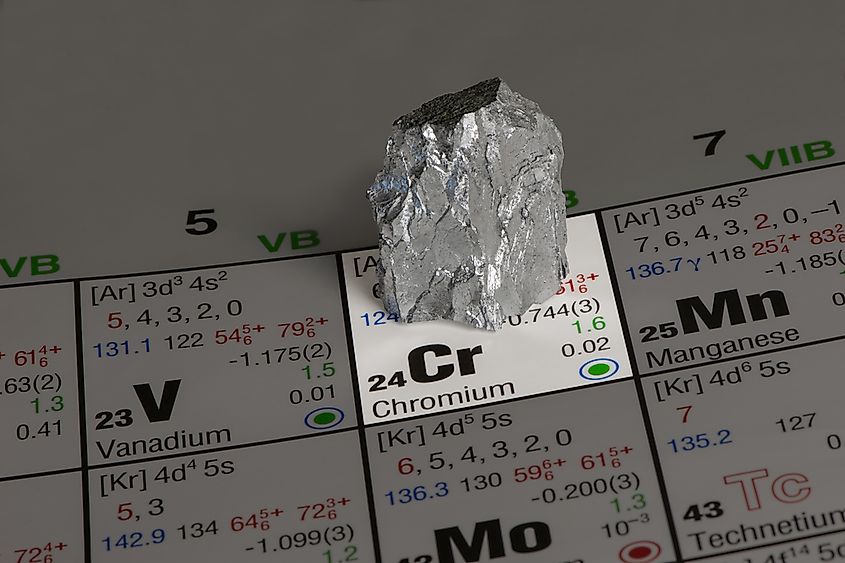

It is accomplished by passing an electric current between two electrodes immersed in an electrolyte bath with chromic acid. Chromium is a great choice for plating as it is lustrous, hard, and naturally resistant to tarnishing and corrosion. Electroplating with ChromiumĮlectroplating, also known as electrodeposition, is the process of plating one metal onto another to prevent corrosion or enhance the appearance. Naturally occurring chromium is a mix of four isotopes. It is the first element in the periodic table to violate the Aufbau principle. Chromium chemistry has some things in common with vanadium, manganese and molybdenum.Ĭhromium’s electron configuration is 3d 5 4s 1. It is the first element of group 6, along with molybdenum and tungsten. It lies to the left of manganese and the right of vanadium on the periodic table. Hexavalent chromium or chromium is extremely toxic as it can cause cancer, destroy red blood cells, and give rise to genetic mutations.Ĭhromium is a hard, silvery transition metal with atomic symbol Cr and atomic number 24.Trivalent chromium is a vital micronutrient and aids the efficiency of insulin in individuals who struggle with glucose intolerance.Southern Africa and Zimbabwe supply 99% of the world’s chromite which is composed of iron(II) oxide and chromium(III) oxide.75% of chromium produced today is used in alloys such as stainless steel to protect and shine base metals such as copper or zinc.Chromium is named after the Greek word ‘chroma’ or ‘chromos’ which translates to ‘color’ and references the element’s ability to compose colorful compounds.Find out more about this radiant transition metal down below! Interesting Facts about Chromium! Moreover, it has a rich chemistry and is well known for creating colorful compounds and is often used to both protect and polish other metals through a process called electroplating. The element chromium (Cr) can be found in group 6 on the periodic table.


 0 kommentar(er)
0 kommentar(er)
